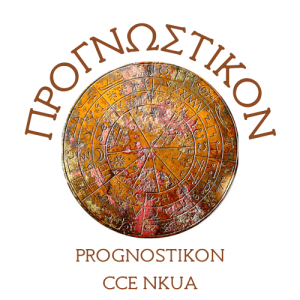By K. Papadimitriou
In a previous article we referred to the commercial foresight of the British Empire during the 19th century, at a time that this empire reached apogee. The political and economic power of the British Empire was based in two converging pillars: global political and military hegemony and economic prowess – both being based on access to resources and the ability of creating and maintaining wealth and well-being through local production. Whereas global dominance was achieved through maritime supremacy, exploration, conquest, and colonization, its economic power was made possible through its ability to locally manufacture and sell its products and goods to her colonies and the rest of the world. This is a crucial element, that is the fact that without the ability to produce goods and services access to trade routes was meaningless. The co-existence of these two components, global dominance, and economic power, is vital to the evolution of any political entity to the status of a great power. If either of these two disappears, power inevitably declines and falls.
The British Empire through its access to inexpensive raw materials from the colonies and, importantly, its capacity for large-scale domestic production, gained through the industrial revolution, grew into a large economic monopoly by selling back its manufactured goods at high prices. Domestic production was thus a cornerstone of the British Empire’s economic power and global dominance. The following by Richard Cobden in 1854 are indicative of the importance of domestic industrial production to the survival and growth of the British Empire (Cobden, 1954, p. 98):
“The commerce of this country, we repeat, is, in other words, its manufactures…In a word, our national existence is involved in the well-doing of our manufacturers.”
However, the – now extinct – British Empire is not the sole example of domestic production’s contribution to a state’s acquisition of global dominance. Historically, a large number of political entities developed into great powers of their time, taking advantage of their capability of domestic production; and in case this ability was accompanied by the richness of their lands in raw materials, the recipe for success was assured. The Byzantine Empire, for example, relied heavily on domestic agricultural production, with the establishment of the “theme” system and the institution of the “Akrites”, the free peasants, cultivating plots of land allotted to them, paying taxes, and fighting to defend them, when necessary, is an indicative example (Charanis, 1953, p. 414). The Ottoman Empire that succeeded Byzantium and conquered the most fertile regions of the old world - built on the Greek legacy of domestic production, technology and historical and contemporary know-how. The vast natural resources, the inexhaustible raw materials and the large domestic production formed the basis for the development, growth, and expansion of the Russian Empire. E. K. Reynolds’ description in 1916, shortly before the fall of the Russian Empire, of the vast natural wealth and domestic production potential of this country is typical (see the postcript).
In the mid-19 century, and especially the end of the American Civil War, marks the beginning of the rapid growth of the United States, the beginning of a course that made United States a great power in the early 20th century and one of the two superpowers of the international system, after the end of World War II. This course was marked also because of its access to vast natural resources, domestic agricultural production, and the rapid development of its industrial and technological sectors that, again, first produced domestically and then exported goods and know-how to international markets. In a similar pattern, but at a much slower pace that is currently rapidly increasing, India also moved after its emancipation from the British rule in the middle of the 20th century, with domestic production and natural wealth forming the engine of Indian economic development starting from the last decade of the 20th century. Lastly, since the introduction of economic reforms in 1978, China’s economy has been growing at an annual average rate of over 6 percent, with manufacturing and technology being the leading sectors of the Chinese economy – there is no question about the importance of domestic production in China, as this forms the basis and foundation for anything that the Chinese state has achieved in the, historically short, period of about 50 years. From the mid-19th century, another traditional imperial power in the Eastern Asia, Japan, thirsty for natural resources sought to become a modern industrialized nation and to increase its industrial production. To this end, in the early 20th century Japan pursued the acquisition of a large empire aiming initially at China’s and Korea’s rich of natural resources and raw material territories. Since its defeat and destruction in World War II, Japan achieved a unique economic miracle, with massive domestic industrial and technological growth that made her the world’s second largest economy by the end of the Cold War. Again, what we observe is that the Japanese economic miracle that followed after World War II was based, almost exclusively, on domestic production.
Today, in our globalized world, where international trade and multinational corporations dominate the economic landscape, the significance of domestic production often gets overshadowed for most of the developed Western world. The trap of technological innovation that gets outsourced for production abroad has worked as an economic “black hole” that absorbed the domestic industrial capacity of many economies, that de-industrialized in favor of a service-based, low-value added economies. A case in point might be Greece, where is complete de-industrialization and dependence on European subsidies and tourism, has twisted both the application of technological growth (no industries left to apply innovations) and the ability to survive economically without tourism and other low-value-added activities. Compare Greece to the former Eastern-bloc countries, like the Czech and Slovak republics or Poland. In these countries the foundations of a large industrial base allowed them to re-start their domestic production in cooperation with their neighboring countries, e.g. Germany, and put them into the path of robust economic growth. Historical experience thus underscores the critical role of domestic production in ensuring economic resilience, stability, and growth, as well as national security – more so in the context of large economic union, as the European Union. It is not a coincidence that the advanced “north” is place of domestic production (and industrial production for that matter) compared to the lagging “south” that is a place of low-value-added service activities. Domestic production is more than just an economic strategy: it is a pathway to building a resilient, prosperous, and sustainable state.
With the above perspective, we could argue that a contemporary parameter of the Eastern Question is the critical weakening of the western economies that have abandoned their domestic production base, which has shifted to the east and far east with disastrous consequences. Although, the United States remains the leading world economy, the projections of its real gross domestic product growth rate until 2029 are around only 2%, while for China, the world’s second-largest economy, is 3,5% and India, being the sixth-largest economy, is running fast with a projected real growth rate around 6,5%, until 2029. Since 2010 China has been the world’s largest manufacturing country, after overtaking United States, which had been the largest for the previous hundred years. During the last twenty years United States and European Union manufacturing output in absolute terms is declining, while China’s and other Asian major economies is increasing. We thus conjecture that Western economies, in order to continue to be in the lead and not be overtaken by the rapidly growing economies of the east, should stop shifting their production base to China and other growing Asian economies and focus on increasing their domestic production, thus taking advantage of their technological prowess and innovations from research and development. By prioritizing and investing in local manufacturing and agriculture, western democracies can ensure economic stability, national security, and a stronger sense of community. In an increasingly uncertain global environment, the ability to produce essential goods and services domestically is an invaluable asset that no country can afford to overlook.
Postscript: The largest part of E. k. Reynolds’s article entitled The Economic Resources of the Russian Empire, is devoted to describing the inexhaustible natural resources of the vast territory of the Russian Empire (8.657.647 square miles). In particular, on pages 253 to 264 he describes in detail the vast timber reserves with annual exports valued 81.800.000$, as well as the large exports of skins and furs. He also mentions the huge yearly production of hundreds and thousands of tons of wheat, rye, oats, barley, cotton, silk, tea, tobacco and other agricultural products. The mineral resources (iron, coal, oil, copper, gold and precious stones) of the Russian Empire, according to Reynolds, place her in the front rank of the wealthy nations of the world, and he makes a special mention of Donetsk’s great coal basin, the largest coal field in Europe, as well as the coal fields in the Caucasus and Urals. He also makes a special mention to Russia’s valuable resources of petroleum, copper, zinc and lead, silver, platinum, precious stones, and the largest gold mines of the world in the Altai Mountains, and Urals, noting that there were also many more areas of vast reserves that remained untapped at the time.
REFERENCES:
Richard Cobden, Russia and the Eastern Question, John P. Jewett & Company, Boston, Jewett, Proctor and Worthington, Cleveland, Ohio, 1854 ( https://www.loc.gov/item/45049597/ )
Peter Charanis, Economic Factors in the Decline of the Byzantine Empire, The Journal of Economic History, Vol. 13, No. 4 (Autumn, 1953), pp. 412-424, Cambridge University Press on behalf of the Economic History Association ( https://www.jstor.org/stable/2114773?origin=JSTOR-pdf )
E. K. Reynolds, The Economic Resources of the Russian Empire, Geographical Review, Apr. 1916, Vol. 1, No. 4 (Apr. 1916), pp. 249-265, Taylor & Francis, Ltd ( https://www.jstor.org/stable/207297 )



